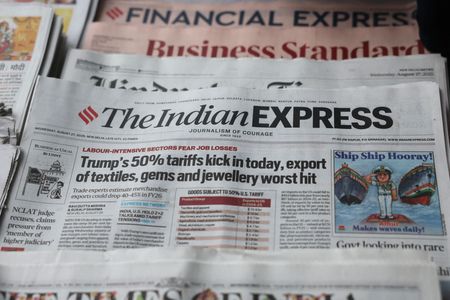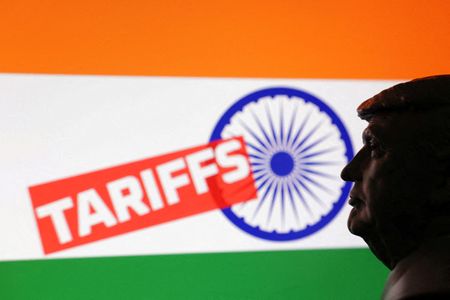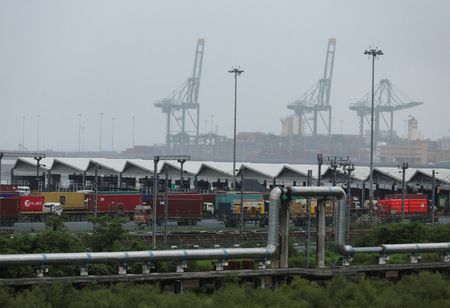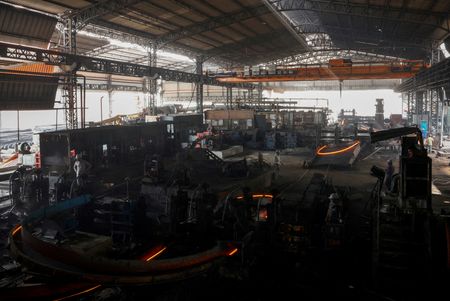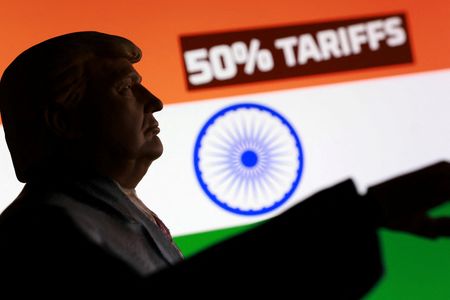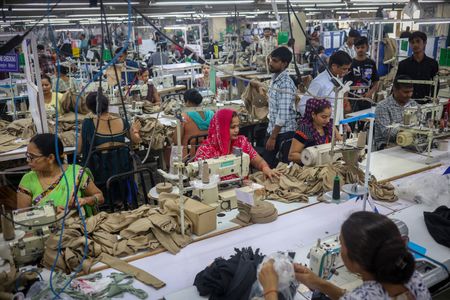NEW DELHI (Reuters) – U.S. President Donald Trump’s doubling of tariffs to as much as 50% on goods from India took effect as scheduled on Wednesday, escalating tension between the world’s two largest democracies and strategic partners.
COMMENTARY:
MADHAVI ARORA, CHIEF ECONOMIST, EMKAY GLOBAL:
“While the tariffs add some downside tail risk, it is too early to consider actual forecast changes.
“While we are also keenly watching the outcome of the ongoing China-U.S. talks, the impending global trade reset is unlikely to be smooth.
“As U.S. Fed’s policy choices will become complicated with too many moving parts, EM central banks, including the RBI, may eventually follow suit, albeit will need to also confront risk-aversion noise via financial market channels.”
UPASNA BHARDWAJ, CHIEF ECONOMIST, KOTAK MAHINDRA BANK:
“The onset of 50% tariffs along with the exemptions suggests an effective tariff rate of approximately 31%. If these higher rates were to sustain through the year, without any breakthrough of a deal then we see major disruption in the labour intensive sectors like gems and jewellery, textiles etc.”
“The high micro, small and medium enterprises sector share in exports is further likely to weigh on employment prospects and hence cloud the consumption demand outlook. We estimate $25-50 billion annualised impact of tariff hikes depending on the scale of the problem.”
“We see about 20-30 bp downside risk to our current GDP estimate of 6.2%.”
TERESA JOHN, LEAD ECONOMIST, NIRMAL BANK INSTITUTIONAL EQUITIES:
“We estimate an impact of about $36 billion or 0.9% of GDP on an annualised basis.
“We believe the pressure is mounting on India to come to a deal at the earliest as the impact on jobs and on growth in labour intensive sectors like textiles and gems and jewellery is quite significant. There are already reports of plant shutdowns and dumping in the domestic market.”
“India could concede to buying more of U.S. oil and weapons and lower tariffs on certain imports although agricultural products like soybean and to a lesser extent dairy remain sensitive areas.”
RADHIKA RAO, SENIOR ECONOMIST, DBS BANK:
“Even as India’s exports to the United States amount to a modest 2.3% of GDP, the sectoral impact of the second 25% tariff kicking in on Wednesday will be asymmetrical.
“Signs of downside risks to growth will also draw in the central bank’s hand, alongside potential relief on the credit and liquidity fronts.
“Meanwhile, other counterefforts, including seeking alternate markets, strengthening trade and investment ties through multilateral as well as bilateral trade deals, will be important.
“Subject to other geopolitical developments, the door for negotiations might reopen later in the year.”
RAJESWARI SENGUPTA, ASSOCIATE PROFESSOR, INDIRA GANDHI INSTITUTE OF DEVELOPMENT RESEARCH:
“The government should adopt a more trade-oriented, less protectionist strategy to boost demand, which is already slacking.
“Doing free trade agreements with multiple countries, doing regional agreements, lowering tariffs and non-trade barriers could be one way to support trade and encourage foreign direct investment.”
AASTHA GUDWANI, INDIA CHIEF ECONOMIST, BARCLAYS:
“We estimate 70% ($55 billion) of India’s exports to the United States are now under serious threat, accelerating downside risks to growth.
“From a ‘good friend’ to a ‘bad trading partner’, it has come a long way.”
SUJAN HAJRA, CHIEF ECONOMIST AND EXECUTIVE DIRECTOR, ANAND RATHI GROUP:
“Washington’s 50% tariff is a jolt, but hardly a knockout. India’s trade deficit may widen by about 0.5% of GDP, growth could dip by half a percentage point and the rupee may weaken modestly.
“Up to 2 million jobs are at risk in the near term. Yet the bigger picture is less gloomy: India’s export base is diversified, its corporate earnings and inflation outlook remain intact, and domestic demand is robust enough to cushion the blow.”
AAKANKSHA SHRAWAN, ASSISTANT PROFESSOR, NATIONAL INSTITUTE OF PUBLIC FINANCE AND POLICY:
“The government should widen its horizons and position itself well, such that it can capitalise on the most overlooked component of India’s trade flows: services.
“There is, therefore, an urgent need to have a relook at the government initiatives (Service Export from India Scheme, Software Technology Park Scheme, Digital India Internship Scheme) and governing bodies (Service Export Promotion Council and MeITY) that aim to promote India’s service exports.”
(Reporting by Tanvi Mehta, Kashish Tandon and Nikunj Ohri; Editing by Muralikumar Anantharaman, Clarence Fernandez and Lincoln Feast.)

